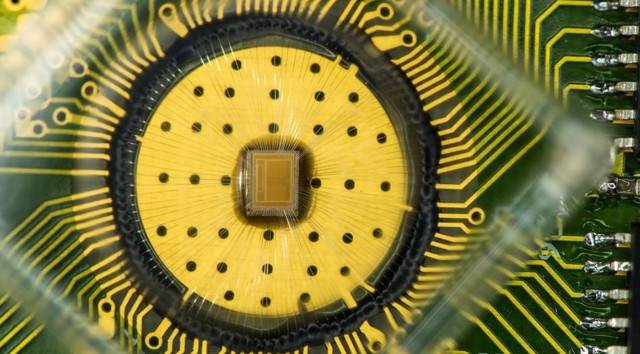Researchers at IBM say they’ve achieved a “significant milestone” in an emerging type of memory technology called phase-change memory (PCM). Because it doesn’t lose data when power is turned off and can endure millions of read-write cycles, PCM could eventually enable new levels of performance in a wide range of devices.
During a demonstration today at the International Memory Workshop in Paris, IBM researchers showed how they can store three bits, rather than one, in every cell of a PCM array — a first for the technology. Achieving such multi-bit storage required scientists to first develop two other enabling technologies.
PCM’s speed, endurance, density and non-volatility could enable faster and more cost-effective data storage for mobile devices and other devices across the Internet of Things, according to IBM. It could also help speed up machine-learning algorithms that rely on large volumes of data.
‘Properties of DRAM and Flash’
According to IBM, PCM is attracting more attention from researchers because it’s a “potential universal memory technology.” PCM operates in one of two stable states: an amorphous, low-conductivity state without any clearly defined structure and a more structured, crystalline state with high electrical conductivity. It works by storing a data “0” in the amorphous state and using the crystalline state to designate a “1.” Similar to how Blue-ray video disks work, PCM cells can be read by applying a low voltage.
“Phase change memory is the first instantiation of a universal memory with properties of both DRAM and flash, thus answering one of the grand challenges of our industry,” Haris Pozidis, manager of non-volatile memory research at IBM Research in Zurich, said in a statement. “Reaching 3 bits per cell is a significant milestone because at this density the cost of PCM will be significantly less than DRAM and closer to flash.”
Race for Memory IP Advances
This latest advance in PCM capabilities required IBM researchers to develop two other technologies first: new metrics for measuring the physical properties of PCM cells and a new coding and detection scheme. These improvements addressed issues with something called “drift” that affects the stability of a PCM cell’s electrical conductivity over time.
Patrick Moorhead, principal analyst at Moor Insights and Strategy, told us that this is just one of the advances IBM has made in PCM technology. However, he added, “This is in research mode, not development mode, so we are years away from real productization.”
Moorhead added that IBM “is very aggressive getting this information out” because other companies like Intel and Micron Technology are also working hard to create new intellectual properties in memory. Last summer, for example, Intel and Micron announced a joint development in non-volatile memory technology called 3D XPoint, which they said offers performance that’s up to 1,000 times faster than NAND.
Image Credit: IBM Research.







